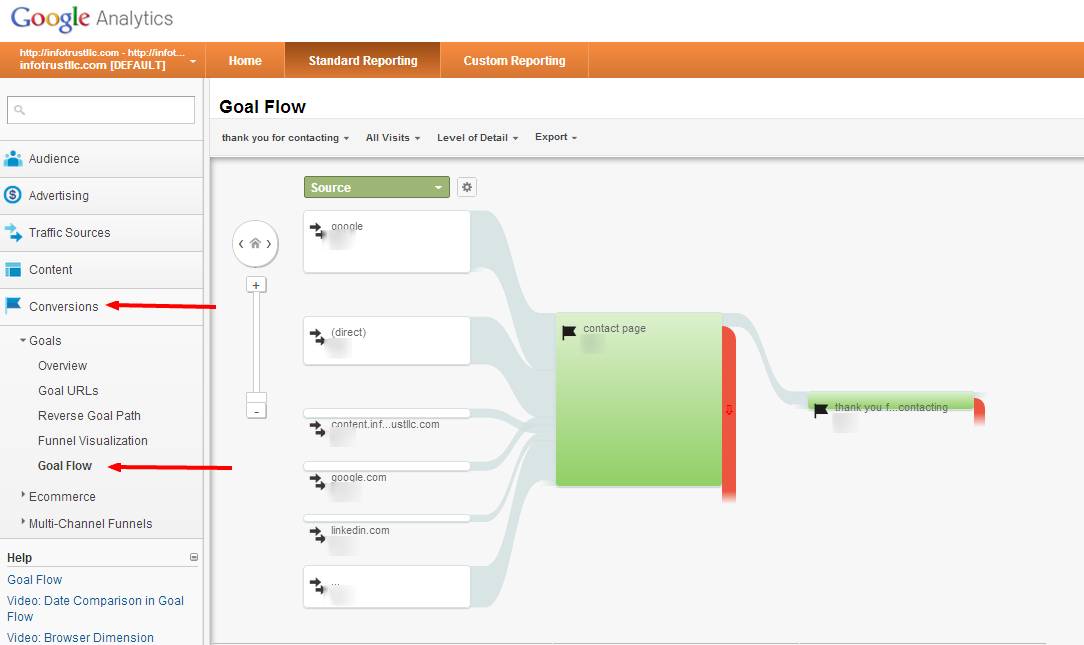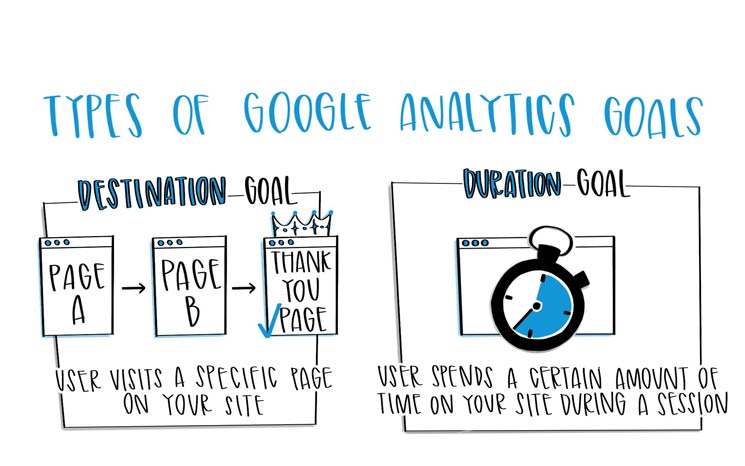What Data Is Google Analytics Goals Unable to Track and Why
Wiki Article
Discover the Limitations of Google Analytics Goals: Unveiling the Information Kind That Remain Untrackable
As services significantly count on data-driven decision-making, recognizing the restrictions of devices like Google Analytics ends up being paramount. While Google Analytics Goals deal beneficial insights into customer interactions, there exist information types that avoid monitoring, presenting difficulties to a thorough understanding of customer behavior.Incomplete User Journey Tracking
Insufficient customer journey monitoring within Google Analytics can hinder the ability to properly examine user actions. When the customer trip is not fully tracked, there are spaces in the information that prevent a comprehensive understanding of just how individuals connect with a site. This absence of understanding can result in missed opportunities for optimization and enhancements to the individual experience.One common concern with insufficient customer trip monitoring is the inability to see the full path that individuals take previously completing an objective or leaving the website. Without this information, it is testing to identify where users might be coming across barriers or rubbing points that avoid them from transforming. Furthermore, insufficient tracking can cover the influence of certain advertising initiatives or website changes on customer actions.
To resolve this restriction, it is critical to set up proper tracking systems within Google Analytics to record the entire customer trip. This might involve setting up occasion tracking, goal funnels, or utilizing devices like Google Tag Supervisor to ensure that no crucial interactions go unrecorded. By acquiring a detailed sight of the customer trip, website proprietors can make even more educated choices to enhance individual engagement and drive conversions.
Acknowledgment Challenges
Navigating through acknowledgment challenges in Google Analytics calls for a detailed understanding of how different touchpoints add to the general conversion process. Acknowledgment difficulties develop from the intricacy of contemporary client journeys, where users engage with numerous networks before converting. Google Analytics gives numerous attribution designs like very first touch, last touch, and linear, each supplying a different viewpoint on just how credit is designated to touchpoints along the conversion path. Nevertheless, these designs may not constantly precisely show truth influence of each touchpoint on the conversion.One typical attribution obstacle is the problem in attributing conversions to the appropriate source, particularly in instances where individuals connect with multiple channels prior to converting. Furthermore, cross-device tracking postures one more acknowledgment difficulty, as individuals typically switch between gadgets throughout their journey, making it testing to track their interactions perfectly.
Offline Conversions
Given the challenges related to associating conversions precisely in online networks, the measurement of offline conversions offers a considerable opportunity for online marketers seeking a more thorough understanding of their clients' journey. Offline conversions refer to activities that clients absorb the real world, such as making acquisitions in brick-and-mortar shops or over the phone, attending occasions, or engaging with published materials - what data is google analytics goals unable to track. These conversions are vital for companies that run both online and offline, as they offer valuable understandings into the efficiency of advertising campaigns throughout different touchpointsTracking offline conversions traditionally positioned a significant challenge for online marketers, as it was testing to connect these actions back to specific on the internet communications accurately. However, with innovations in technology, such as the combination of CRM systems, one-of-a-kind identifiers, and discount coupon codes, organizations can now bridge the gap in view it now between online and offline information to obtain a much more alternative view of consumer actions. By effectively gauging offline conversions, marketers can maximize their approaches, allot resources much more effectively, and inevitably enhance the total customer experience.
Cross-Device Monitoring
Cross-device tracking plays a crucial function in recognizing the interconnected nature of customers' electronic interactions throughout numerous tools. In today's omnichannel globe, where individuals seamlessly switch over between desktops, tablet computers, and mobile phones, tracking their actions across these devices is crucial for online marketers to obtain an extensive sight of their consumer trip.
Moreover, personal privacy issues and regulations such as GDPR and CCPA have even more complicated cross-device tracking. With users demanding more control over their information and increased constraints on monitoring technologies, marketing experts should locate privacy-compliant and ingenious means to link customer interactions across devices.
Dynamic Content Interaction
Comprehending customer interaction with vibrant web content is pivotal in maximizing digital advertising and marketing strategies for boosted audience interaction. Dynamic material refers to internet site elements that change based on user habits, choices, or various other aspects, supplying a tailored experience. Nonetheless, tracking customer interactions with dynamic content positions challenges for standard analytics devices like Google Analytics.While Google Analytics can track standard interactions like clicks and page sights, it may have a hard time to record more nuanced engagements within dynamic web content. what data is google analytics goals unable to track. Metrics such as time invested in specific dynamic elements, hover actions, or communications within pop-ups are typically not quickly quantifiable making use of common monitoring techniques. This restriction hinders marketing professionals' ability to fully grasp how individuals are involving with vibrant content and tailor their strategies accordingly

Conclusion
In verdict, Google Analytics goals have restrictions in tracking incomplete individual trips, associating conversions properly, recording offline conversions, tracking cross-device interactions, and measuring dynamic content engagement. These restrictions highlight the relevance of checking out extra tracking approaches and devices to obtain a more extensive understanding of customer behavior and conversions past what Google Analytics can provide.While Google Analytics Goals deal valuable insights into individual interactions, there exist information kinds that elude tracking, posing obstacles to an extensive understanding of customer habits.Incomplete customer journey monitoring within Google Analytics can impede the capability to precisely examine user actions. When the individual journey is not fully tracked, there are gaps in the data that stop a comprehensive understanding of how individuals connect with an internet site.One typical problem with insufficient individual journey tracking is the inability to see the full course that individuals take before finishing an objective or leaving the site. By acquiring a detailed view of the individual trip, site owners can make even more educated choices to improve individual engagement and drive conversions.
Report this wiki page